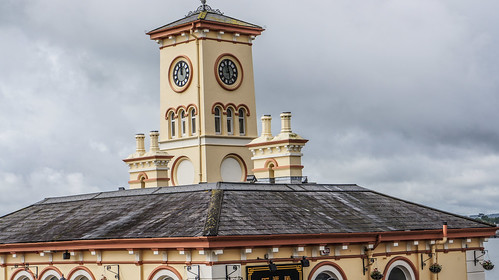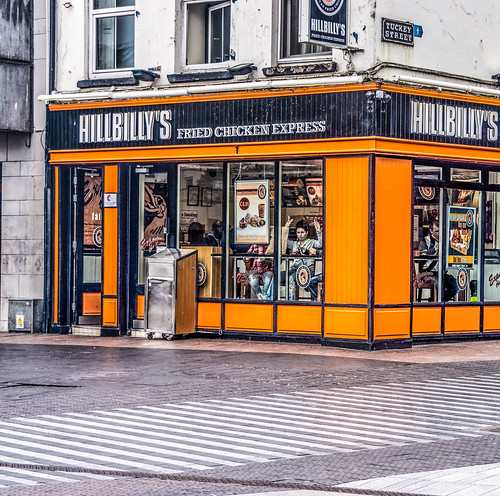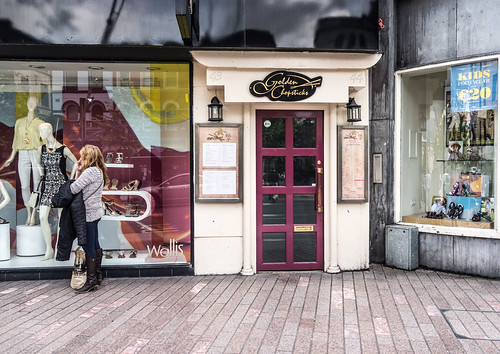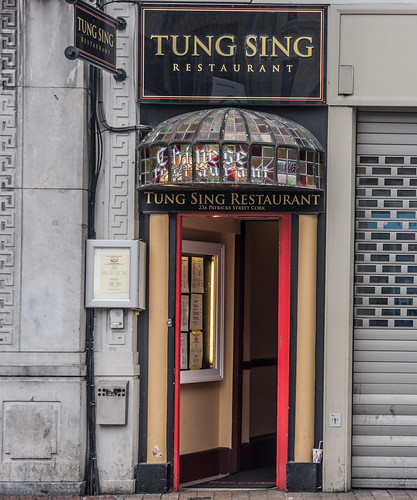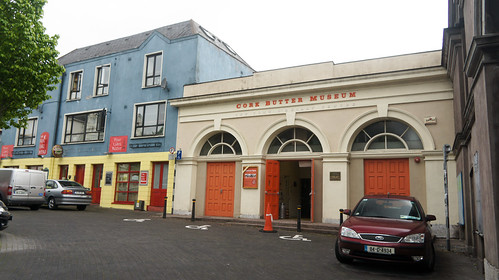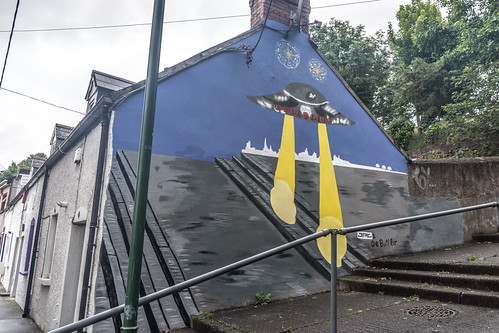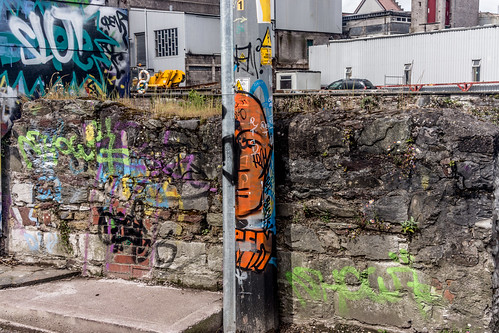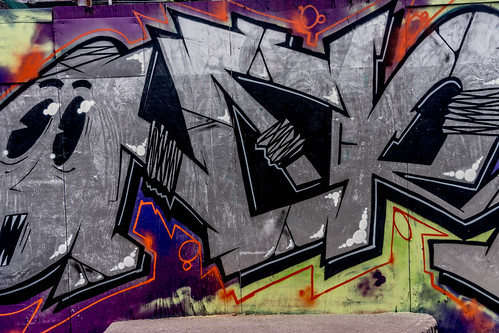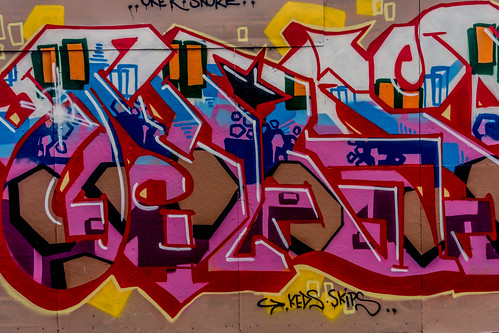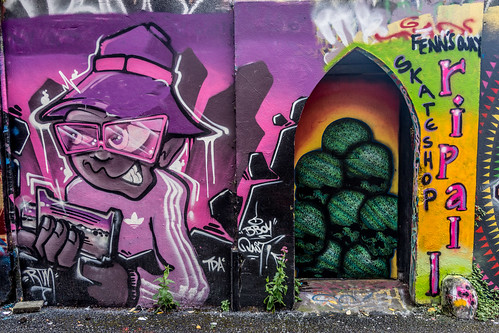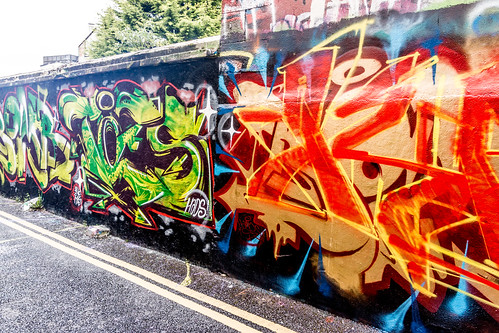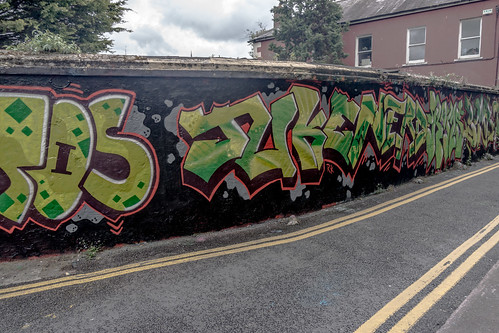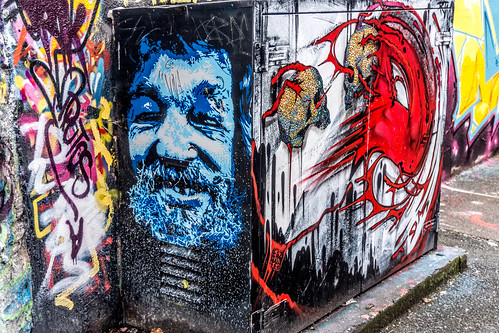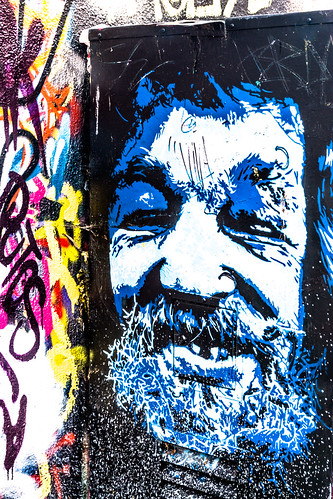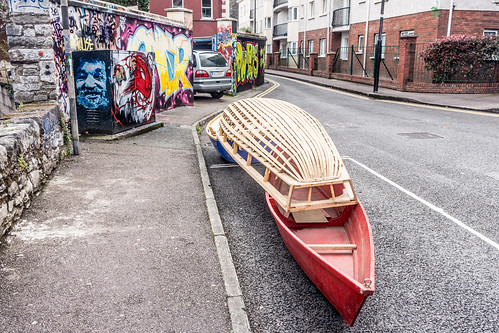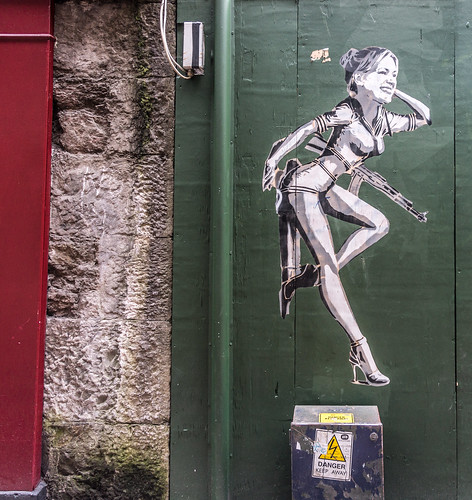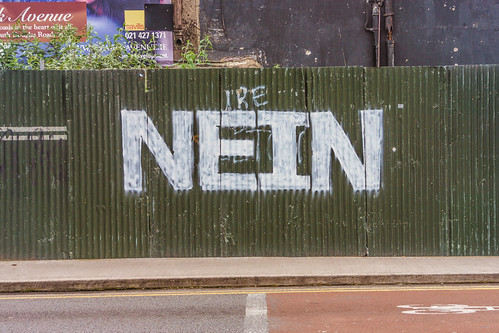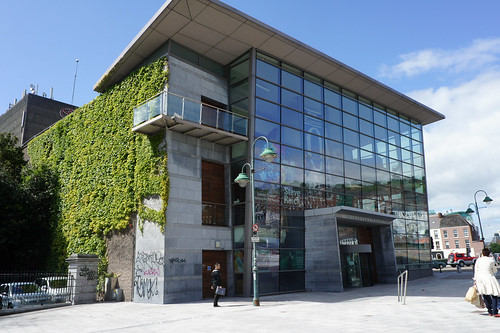Cobh (pronounced Cove) dominates Cork Harbour one of the largest natural harbours in the world. This colourful town has experienced invasion, emigration, transportation and a wealth of maritime adventure.
Attractions in the town include St. Colman's Cathedral, a magnificent 19th century Gothic revival and home to the largest Carillon (49-bells), in Ireland and the UK. The Cathedral Spire overlooks the brightly painted town of Cobh and the inner islands of the harbour, Spike Island, renowned for its historical legacy and Fort and Haulbowline Island site of the oldest yacht club in the world, the Royal Cork Yacht Club which was founded in 1720.
Cobh became the country's main emigration port following the Great Famine of 1846 - 1848 Following the visit of Queen Victoria in 1849, the town was renamed Queenstown but in 1921, it reverted to the old name of Cobh.
On the shoreline, a statue memorialises Annie Moore, the first immigrant to disembark at Ellis Island. Coffin and prisoner ships, bound for the southern hemisphere, all embarked from this shoreline. The Titanic's last port of call was Cobh and the ill-fated Lusitania also has a tragic association with the town. Cobh's unique origins are dramatically recalled in the Queenstown Story, on the Titanic Trail and at the Cobh Museum. The Cobh Heritage Centre also offers a Genealogy service
CORK - PHOTOS BY INFOMATIQUE
Saturday, December 1, 2012
Wan Fu Chinese Restaurant In Cobh (County Cork)
My Favourite Chinese Restaurant In Cork City - The Ambassador
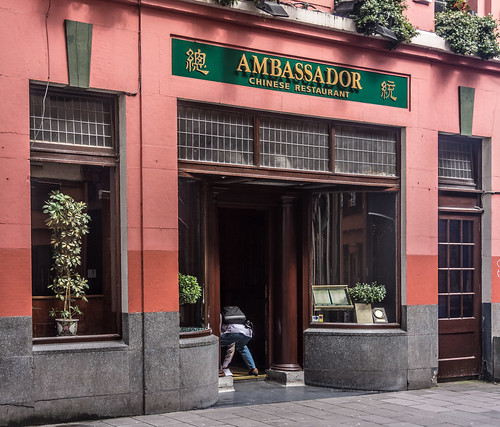
My Favourite Chinese Restaurant In Cork City - The Ambassador, a photo by infomatique on Flickr.
Unfortunately this restaurant ceased trading in June 2014
Friday, November 23, 2012
Cork Butter Museum - Ireland
Shandon Area of Cork City
Shandon is the area north of the River Lee, right in the center of Cork and well worth a trip across the North Channel by way of the Christy Ring Bridge.
The Church of St Anne in Shandon on Shandon Street is home to the famous Shandon Bells, built in 1720's it is one of Cork's most famous landmarks. The design of the building consists of a square tower surmounted by a lantern, on top of the lantern is a copper dome with a gilded weather vane in the shape of a salmon. Two sides of the tower are made from red sandstone and the other two are made from limestone. The four-faced clock, made by James Mangan of Cork, was erected by Cork Corporation in 1847 and had been known as "The Four Faced Liar" ( also "The Four Liars") as the clocks never agreed. According to tourist guides this problem has been rectified but some of my photographs show that some of the clocks do not agree.
The Cork Butter Museum is a unique institution, celebrating one of the great success stories of Ireland, the butter trade. Located in the historic Shandon area of Cork city, the story begins with the central role of dairy culture in the Island of Saints and Scholars. The Museum goes on to describe the internationally important Butter Exchange in nineteenth century Cork, the traditional craft of home butter making and the modern success of the Kerrygold brand. In the course of this story, the commercial, social, and domestic life of Ireland is recalled.
The Firkin Crane building was designed by Sir John Benson and opened in 1855. The building is a unique rotunda, which formed part of Cork's original Butter Exchange.
This building forms part of an interesting group of related structures with the former butter market buildings in the Shandon area. The butter trade originating from Cork City in the eighteenth and nineteenth centuries stretched to Great Britain, Europe, North America, the Caribbean, and the West Indies. Indeed the building's name derives from Danish words pertaining to measures of butter. Firkin is a Danish word meaning quarter barrel and in former times these firkins or casks were tarred and weighed on a balance known as a crane.
The building is also of archaeological significance as it was constructed on the site of medieval Shandon Castle. This site was occupied by the Dominicans, who had a chapel and convent here from 1784 until 1840.
When the Butter Market closed in 1924 James Daly and Sons occupied the building until the 1970’s when they moved their margarine manufacturing business to new premises. The building also housed a hat factory for a time.
The Firkin Crane was completely destroyed by fire in 1982. It reopened in 1992 and is now a bustling centre for dance of all kinds. With four dance studios and two performance spaces, it is a unique building for dance in Ireland. Large scale performances run throughout the year along with a range of regular classes and workshops across a spectrum of dance styles. The Firkin Crane is a permanent base for Cork City Ballet, Crux Dance Theatre and equally home for all the professional and community dance artists in the area.
The Cathedral of St. Mary and St. Anne, known locally as the North Chapel, is located at the top of Shandon Street, in one of the most historic areas of Cork. The Cathedral is the principal church of the diocese of Cork & Ross and is the place where major diocesan celebrations take place. The Cathedral was dedicated in 1808 and celebrated its bicentenary in 2008. The interior was rebuilt by George Richard Pain, in 1828 following a fire. The tower dates from 1862. John Hogan produced the apostles and the saints figures, and the bas relief, "Last Supper" as well as the Bishop Murphy mural monument. Turnerelli produced the bust of Bishop Moylan.
Saturday, June 9, 2012
St. Colman’s Cathedral is a Roman Catholic Cathedral located in Cobh, Ireland
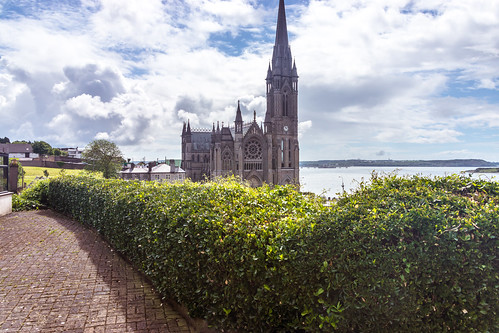
St. Colman’s Cathedral is a Roman Catholic Cathedral located in Cobh, Ireland, a photo by infomatique on Flickr.
Cobh cathedral is a neo-gothic cathedral, designed by the architects, Pugin and Ashlin. The cathedral is one of the first sights that many tourists get when they travel to Cobh on one of the many cruise ships that call to our town each summer. It towers over the town of Cobh and Cork Harbour. The cathedral was dedicated to St.Coleman who founded the Diocese of Cloyne in 560AD. Coleman was poet to the King of Munster at Cashel. Influenced by St. Brendan and St. Ita, he left the King to become a priest.
Friday, June 8, 2012
St. Colman’s Cathedral is a Roman Catholic Cathedral located in Cobh, Ireland
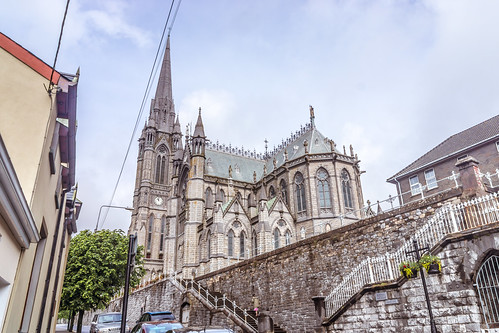
St. Colman’s Cathedral is a Roman Catholic Cathedral located in Cobh, Ireland, a photo by infomatique on Flickr.
Cobh cathedral is a neo-gothic cathedral, designed by the architects, Pugin and Ashlin. The cathedral is one of the first sights that many tourists get when they travel to Cobh on one of the many cruise ships that call to our town each summer. It towers over the town of Cobh and Cork Harbour. The cathedral was dedicated to St.Coleman who founded the Diocese of Cloyne in 560AD. Coleman was poet to the King of Munster at Cashel. Influenced by St. Brendan and St. Ita, he left the King to become a priest.
Street Art And Graffiti In Cork
Cork is the second largest city in Ireland and the island of Ireland's third most populous city. It is the principal city and administrative centre of County Cork and the largest city in the province of Munster. Cork had a population of 119,418 in 2011, while the addition of the suburban areas contained in the county brings the total of the urban area to 198,582. Metropolitan Cork has a population of 399,216, while the Greater Cork area is about 518,128.
County Cork has earned the nickname of "the Rebel County", while Corkonians often refer to the city as the "real capital of Ireland", and themselves as the "Rebels". The city is built on the River Lee which divides into two channels at the western end of the city. The city centre is located on the island created by the channels. At the eastern end of the city centre they converge; and the Lee flows around Lough Mahon to Cork Harbour, one of the world's largest natural harbours.
The city is a major Irish seaport; there are quays and docks along the banks of the Lee on the city's east side.
Tuesday, April 24, 2012
Cork - French's Quay/Sullivan's Quay
French's Quay is named after James French who was a wine merchant in Cork in the late seventeenth and early eighteenth centuries. His house stood at the foot of Barrack Street adjoining present-day French's Quay. James French was very prominent in the civic life of Cork. He was a member of Cork Corporation, a magistrate and was Mayor of Cork in 1696. His business interests dovetailed with his civic activities as he frequently supplied the wine which was drunk by the city fathers on festive occasions. His son Philip served as Mayor of Cork in 1715 and another son Abraham held the same office in 1717. It is quite likely that the Vikings had a settlement along what later became French's Quay.
Cork Butter Museum - Ireland
Shandon Area of Cork City
Shandon is the area north of the River Lee, right in the center of Cork and well worth a trip across the North Channel by way of the Christy Ring Bridge.
The Church of St Anne in Shandon on Shandon Street is home to the famous Shandon Bells, built in 1720's it is one of Cork's most famous landmarks. The design of the building consists of a square tower surmounted by a lantern, on top of the lantern is a copper dome with a gilded weather vane in the shape of a salmon. Two sides of the tower are made from red sandstone and the other two are made from limestone. The four-faced clock, made by James Mangan of Cork, was erected by Cork Corporation in 1847 and had been known as "The Four Faced Liar" ( also "The Four Liars") as the clocks never agreed. According to tourist guides this problem has been rectified but some of my photographs show that some of the clocks do not agree.
The Cork Butter Museum is a unique institution, celebrating one of the great success stories of Ireland, the butter trade. Located in the historic Shandon area of Cork city, the story begins with the central role of dairy culture in the Island of Saints and Scholars. The Museum goes on to describe the internationally important Butter Exchange in nineteenth century Cork, the traditional craft of home butter making and the modern success of the Kerrygold brand. In the course of this story, the commercial, social, and domestic life of Ireland is recalled.
The Firkin Crane building was designed by Sir John Benson and opened in 1855. The building is a unique rotunda, which formed part of Cork's original Butter Exchange.
This building forms part of an interesting group of related structures with the former butter market buildings in the Shandon area. The butter trade originating from Cork City in the eighteenth and nineteenth centuries stretched to Great Britain, Europe, North America, the Caribbean, and the West Indies. Indeed the building's name derives from Danish words pertaining to measures of butter. Firkin is a Danish word meaning quarter barrel and in former times these firkins or casks were tarred and weighed on a balance known as a crane.
The building is also of archaeological significance as it was constructed on the site of medieval Shandon Castle. This site was occupied by the Dominicans, who had a chapel and convent here from 1784 until 1840.
When the Butter Market closed in 1924 James Daly and Sons occupied the building until the 1970’s when they moved their margarine manufacturing business to new premises. The building also housed a hat factory for a time.
The Firkin Crane was completely destroyed by fire in 1982. It reopened in 1992 and is now a bustling centre for dance of all kinds. With four dance studios and two performance spaces, it is a unique building for dance in Ireland. Large scale performances run throughout the year along with a range of regular classes and workshops across a spectrum of dance styles. The Firkin Crane is a permanent base for Cork City Ballet, Crux Dance Theatre and equally home for all the professional and community dance artists in the area.
The Cathedral of St. Mary and St. Anne, known locally as the North Chapel, is located at the top of Shandon Street, in one of the most historic areas of Cork. The Cathedral is the principal church of the diocese of Cork & Ross and is the place where major diocesan celebrations take place. The Cathedral was dedicated in 1808 and celebrated its bicentenary in 2008. The interior was rebuilt by George Richard Pain, in 1828 following a fire. The tower dates from 1862. John Hogan produced the apostles and the saints figures, and the bas relief, "Last Supper" as well as the Bishop Murphy mural monument. Turnerelli produced the bust of Bishop Moylan.
Cork Opera House
Cork Opera House is a theatre and opera house in Cork in the Republic of Ireland. It was originally built in 1855, although its existence has not been continuous; having survived the burning of much of Cork by British forces in reprisal for an ambush of a military convoy in 1920 by Irish rebels, the Opera House nevertheless was burned down in its centenary year by a combination of old wiring and wooden materials. Although Cork had until then boasted the presence of a proper theatre in some form for over 250 years, it was not until 1963 that the Opera House was rebuilt fully and opened.
More recently, in 2003, large scale renovation works were completed on both the facade of the building and the surrounding Emmet Square. Built, according to its original architect Sir John Benson, for the "promotion of science, literature and the fine arts, and the diffusion of architectural knowledge," the Opera House has always housed far more than just Opera. Performances of all types are a part of its history and current repertoire, and locals find both its range and lack of affiliation with multinationals such as Ticketmaster make a refreshing change.
Emmet place is a 'hang-out' area for teenagers in Cork especially skaters and rockers and is referred to as 'The Op'. The Half Moon Theatre lies to the rear of the Opera House.
